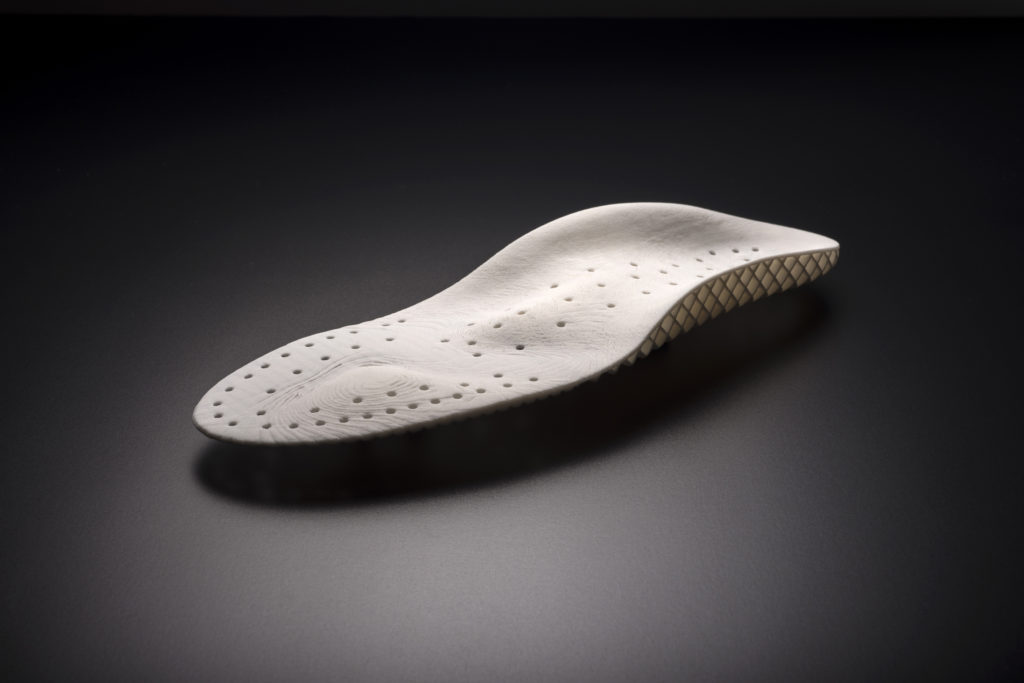At K 2019, Covestro will be presenting the prototype for a new application of materials for additive manufacturing: 3D-printed orthopedic insoles for shoes. They are efficiently produced using an automated and completely digitalised process that generates almost no waste. The part in question is in the form of a 3D file that can be sent anywhere in the world. On site, a printer uses this data to produce the physical product – regardless of whether only a single individualised sole or millions of soles have to be produced.
“Thermoplastic polyurethane is the material of choice for this application thanks to its favourable range of properties,” said Patrick Rosso, Head of Additive Manufacturing at Covestro. “In particular, our TPU products cover a wide range of hardness. The hardness can also be adjusted by changing the printing structure. This allows manufacturers to print shoe insoles that are completely custom-made – with hard or soft contact areas.”

At K 2019 Covestro will present 3D-printed orthopedic insoles for shoes. They are efficiently produced from thermoplastic polyurethane (TPU) using an automated and completely digitalized process that generates almost no waste.
Together with a partner, Covestro is currently testing different sole designs to determine which are the easiest to print along with the most durable. Initial tests have been promising, both in terms of functionality and longevity. Orthopedic insoles are often produced by hand and take a lot of time. Besides that, conventional insoles are e.g. made by forming or machining rigid foam blocks and are also less breathable. Using additive manufacturing offers a more sustainable approach to producers. It could help significantly more people to get access to orthopedic insoles.
Already back in May 2018, Covestro presented the design of an efficient complete solution for the manufacture of orthopedic shoe lasts at the OT World orthopedics trade fair in Leipzig, Germany. Thanks to 3D printing technology, the time required for production has been reduced from several weeks to just a few days. At the same time, patient visits to the shoe manufacturer can be reduced to a minimum. After the trade fair, customers expressed the idea of also printing the insoles instead of manufacturing them by hand as before. The idea and the favourable material properties of TPU were the reason for the current project, said Covestro.
Covestro at K 2019, hall 6, stand A75
